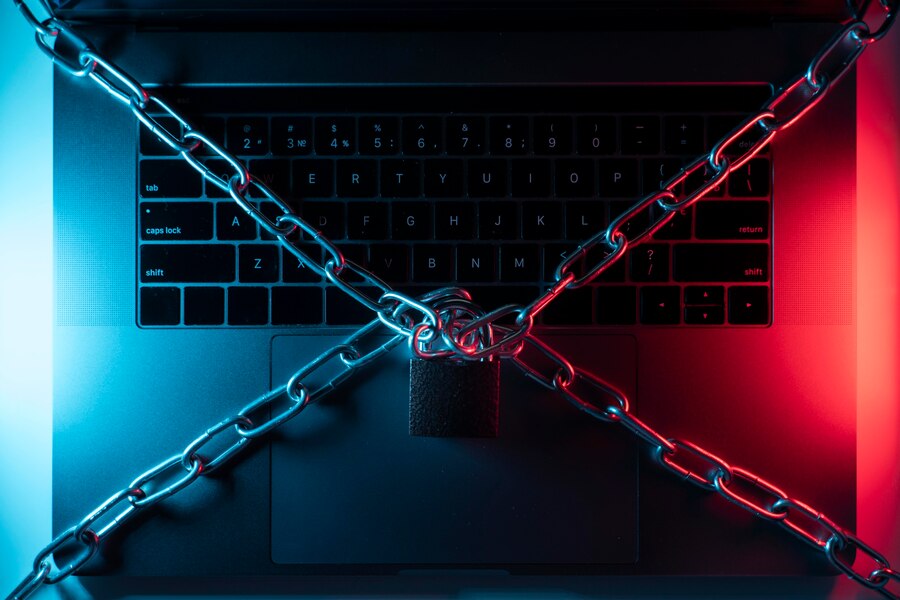In the digital age, cybersecurity is critical due to evolving cyber threats. Understanding its basics, taking preventive measures, and staying updated are essential for protecting sensitive data and mitigating risks effectively.
Understanding Cybersecurity
What is Cybersecurity?
Cybersecurity refers to the practice of protecting computer systems, networks, and data from unauthorized access, cyberattacks, and data breaches. It encompasses various technologies, processes, and practices designed to ensure the confidentiality, integrity, and availability of digital assets.
Importance of Cybersecurity
The importance of cybersecurity cannot be overstated in today’s interconnected world. A breach in cybersecurity can result in severe consequences, including financial losses, reputational damage, and legal ramifications.
Common Cyber Threats
Cyber threats come in various forms, ranging from malware and phishing attacks to ransomware and insider threats. Hackers and cybercriminals exploit vulnerabilities in software, networks, and human behavior to gain unauthorized access to systems and steal sensitive information.
Staying vigilant against these threats requires a proactive approach and a comprehensive cybersecurity strategy.
Cybersecurity Measures

Antivirus Software
Antivirus software plays a vital role in detecting and removing malicious software, such as viruses, worms, and Trojans, from computer systems. It continuously scans files and programs for potential threats, providing an additional layer of defense against cyberattacks.
Firewalls
Firewalls act as a barrier between a trusted internal network and untrusted external networks, such as the Internet. They monitor and control incoming and outgoing network traffic based on predetermined security rules, preventing unauthorized access and protecting against cyber threats.
Encryption
Encryption involves the use of cryptographic algorithms to convert sensitive data into an unreadable format, known as ciphertext, which can only be deciphered with the appropriate decryption key. It ensures data confidentiality and integrity, even if intercepted by unauthorized parties.
Regular Software Updates
Regularly updating software and operating systems is essential for addressing known vulnerabilities and patching security flaws. Software updates often include fixes for bugs and security patches that help protect against potential cyber threats.
Employee Training
Employee training and awareness programs are critical for strengthening cybersecurity within organizations. Educating employees about common cyber risks, such as phishing scams and social engineering attacks, empowers them to recognize and report suspicious activities, reducing the likelihood of successful cyberattacks.
Cybersecurity Best Practices

Strong Passwords
Using strong, unique passwords for accounts and regularly updating them is essential for preventing unauthorized access. Strong passwords typically include a combination of letters, numbers, and special characters and are not easily guessable.
Two-factor authentication (2FA)
Two-factor authentication enhances security by requiring users to provide two forms of verification before accessing an account, such as entering a one-time code or using biometric authentication.
Data Backup
Regularly backing up data ensures that critical information is protected against loss or corruption caused by cyberattacks or system failures. Backups should be stored securely and tested regularly to ensure they can be restored when needed.
Network Segmentation
Network segmentation involves dividing a network into smaller, isolated segments to limit the impact of a cyberattack and prevent lateral movement by attackers. It helps contain breaches and protects sensitive data by restricting access based on user roles and permissions.
Incident Response Plan
Having an incident response plan in place is essential for effectively responding to cyber incidents and minimizing their impact. This plan outlines the steps to be taken in the event of a security breach, including identifying the threat, containing the damage, and restoring normal operations.
Emerging Trends in Cybersecurity

Artificial Intelligence (AI) in Cybersecurity
Artificial intelligence and machine learning technologies are increasingly being used in cybersecurity to detect and respond to cyber threats more efficiently. AI-powered systems can analyze vast amounts of data, identify patterns and anomalies, and automate threat detection and response processes.
Internet of Things (IoT) Security
As the number of connected devices continues to rise, securing the Internet of Things (IoT) has become a top priority for organizations. IoT security measures include device authentication, data encryption, and regular firmware updates to protect against cyber threats targeting connected devices.
Cloud Security
Cloud security is vital for safeguarding data and applications hosted in cloud environments from cyber threats. Service providers implement diverse security measures to protect cloud-based assets and ensure data privacy and compliance.
Conclusion
Prioritizing cybersecurity is crucial for protecting digital assets, building customer trust, and ensuring business resilience against evolving cyber threats.
By embracing robust cybersecurity practices, staying informed about emerging trends, and fostering security awareness, individuals and businesses can bolster their protection against cyberattacks and manage risks more effectively.
FAQs (Frequently Asked Questions)
- What is cybersecurity?
Cybersecurity refers to the practice of protecting computer systems, networks, and data from unauthorized access, cyberattacks, and data breaches. - Why is cybersecurity important?
Cybersecurity is vital as it helps safeguard sensitive information, prevents financial losses, and shields against reputational damage and legal ramifications resulting from cyber incidents. - What are some common cyber threats?
Common cyber threats include malware, phishing scams, ransomware, insider threats, and denial-of-service (DoS) attacks, among others. - How can individuals improve their cybersecurity posture?
Individuals can enhance their cybersecurity posture by using strong, unique passwords, enabling two-factor authentication (2FA), regularly updating software, backing up data, and remaining vigilant against phishing scams and other cyber threats. - What are some emerging trends in cybersecurity?
Emerging trends in cybersecurity encompass the use of artificial intelligence (AI) and machine learning, securing the Internet of Things (IoT), and bolstering cloud security measures to shield against evolving cyber threat
-
-
You’ll also like this:
-
Remote Work Solutions: Navigating the Future Work Environments
-
Influencer Marketing: Digital Influencers to Boost Your Brand
Must visit the home page:
-
-




